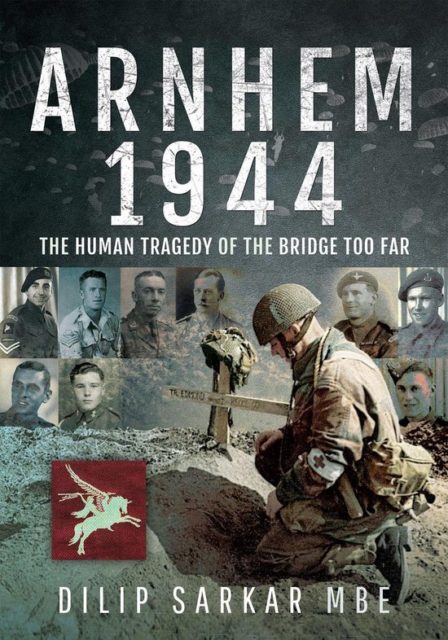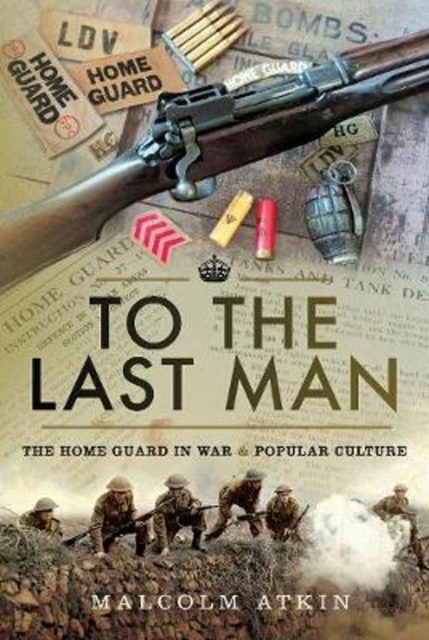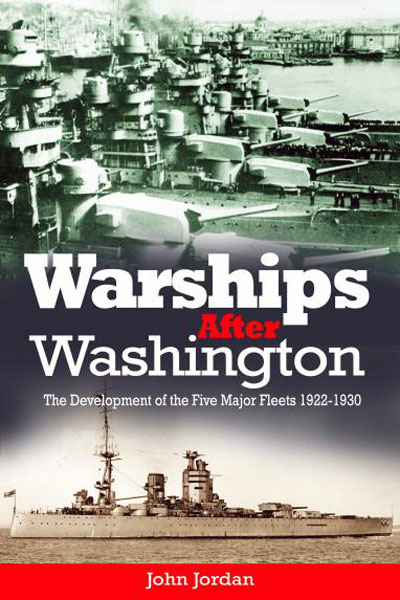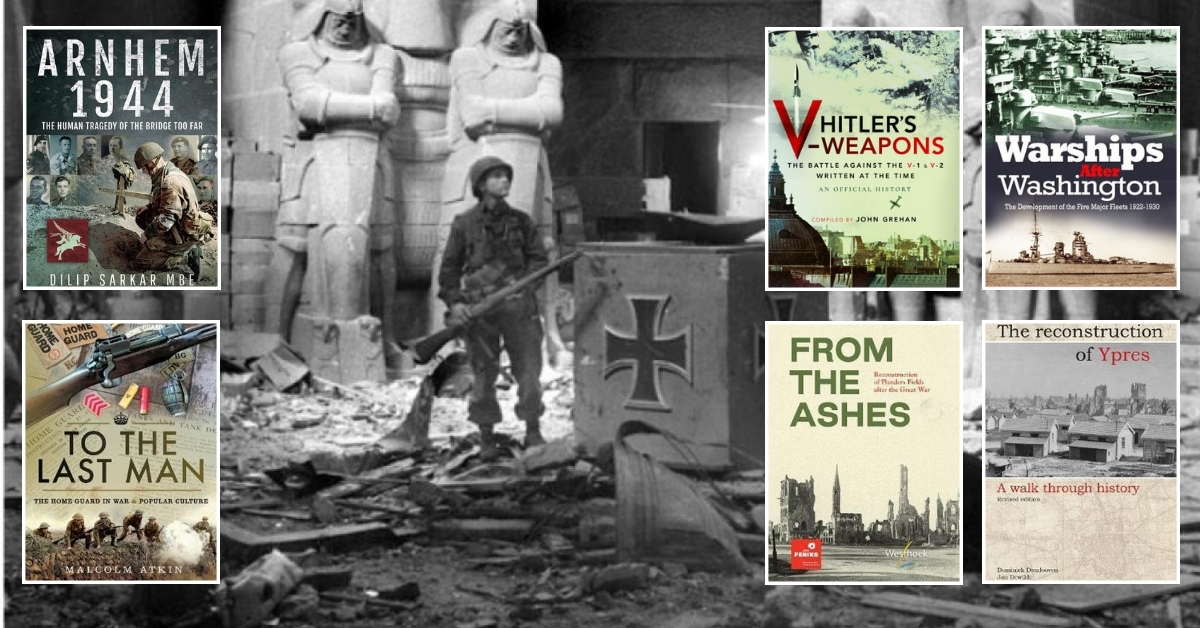Dilip Sarkar is perhaps best known for his histories of airmen and people involved in the Battle of Britain. This volume considers some of the men involved in the ill-fated airborne assault on the Rhine bridges in 1944. Mr Sarkar employs all his powers to remind us the men of the British 1st Airborne Division and their many comrades in arms paid a high price for strategic failure. Market-Garden remains a hot topic decades on from those tumultuous September days and it is right to focus on the human cost which was very real. Fair to say a visit to the British cemetery at Oosterbeek left me with a lump in my throat and I won’t forget brief contact with the children of a glider pilot who latched on to a photo I had taken of the grave of their dad’s best pal.
I am forever deeply saddened by the fate in life and death of the Poles who fought in the campaign who found themselves unwanted during a particularly tricky period of political snakes and ladders. Mr Sarkar looks at men from a wide range of units and his straightforward but deeply personable style of remembrance really sits well with me. There goes another lump in the throat. There is something about Arnhem, like Rorke’s Drift, the first day of the Somme and the Charge of the Light Brigade it stirs something that isn’t just tedious one-dimensional nationalism. I can’t quite put my finger on what is. This book helps us get closer to precisely what I mean.

ARNHEM 1944
The Human Tragedy of the Bridge Too Far
By Dilip Sarkar MBE
Frontline
ISBN: 978 1 152673 273 6
Malcolm Atkin’s fascinating look at the Home Guard of wartime Britain is designed to dispel some of the whimsy created by the legendary BBC television sitcom Dad’s Army which continues to delight fifty odd years since it began airing. It was a serious business for the real units. The war graves of Home Guard men who were the victims of enemy action and accidents or who died of natural causes can be found across Britain and they are men who should be honoured. I think especially of a press photographer, Charles Maxwell, who was killed in an air raid on London while he was performing guard duty.
Mr Atkin takes us through the formation and activities of the Home Guard from the corps’ inception in 1940 until when it was deemed superfluous in the second half of 1944. The book also looks at attempts to raise a new organisation during the dark days of the Cold War and how the scheme was mired in politics. The author takes time to consider what impact Dad’s Army and other lesser known depictions have had on our collective memory of the Home Guard. All in all this is a very useful and entertaining read.

TO THE LAST MAN
The Home Guard in War & Popular Culture
By Malcolm Atkin
Pen & Sword
ISBN: 978 1 52674 593 4
The Washington Naval Treaty of 1922 was the world’s first arms limitation agreement. It came out of the Great War and the realisation that the toxic naval arms race precipitated by the Germans and contested by the British had been a significant cause of the conflict. The victorious powers of 1918/19 determined this could not happen again.
The result of the treaty left something of a mixed bag. The Royal Navy remained all-powerful and the ratio of tonnage it held against its nearest rivals was enough to maintain the status quo.
John Jordan considers how the British, Americans, French, Italians and Japanese responded to Washington – what they could and could not build, what they had to give up and what this meant for the future. It takes the London Treaty of 1930 into account and, not unlike some the big battleship books, wonders what might have been had the admirals been able to build what they wanted. Fascinating stuff. This book is essential reading for between the wars historians delving into naval matters.

WARSHIPS AFTER WASHINGTON
The Development of the Five Major Fleets 1922-1930
By John Jordan
Seaforth Publishing
ISBN: 978 1 84832 117 5
I met John Grehan at the Houses of Parliament in London back in 2014 and he advised me that being a published man – meaning books – was all that mattered in this game. It ruffled my feathers, but I took his comments at face value. Well, here we are with another book from this most prolific of authors. This time round he examines the British response to Hitler’s V weapons. The impact of the dreaded doodlebugs and the silent killer V-2 is something many a London born person like myself could get at first hand from older relatives. My grandmother lost her home to a V-2 and my mother’s description of watching and waiting for the V-1 engine to cut out is fixed on my mind. This was real history that my family endured.
Mr Grehan collates reports and analysis from the war against the V weapons, divining important chunks of detail to underscore narrative histories that do the rounds. I like the way he eschews the urge to interpret the writings of others and sticks to the script. This serves to make this volume all the more authentic. Like the Home Guard book we saw earlier, this is an important resource for students of the war on the home front in Britain.

HITLER’S V-WEAPONS
The Battle Against the V-1 & V-2 Written At the Time
An Official History
Compiled by John Grehan
Frontline ISBN: 978 1 52677 005 9
Here we have two very interesting volumes looking at the reconstruction of Ieper or Ypres following the Great War. When we consider that it took many decades to rebuild an ancient city that was utterly destroyed by four years of war, it seems all the more remarkable that the lovely old place we know today was returned to it’s former glory rather than being redeveloped in a modern style. Both volumes act like a gazetteer-cum-survey of what we know today. I have visited and stayed in the city many times and it remains a very special place in my heart. Flanders can be a curious place, supposedly flat and seemingly featureless. I have rarely seen it in fine weather. But Ypres shines.
Battlefield guides are lovely things in themselves, but these books offer something different in presenting Ieper in a different perspective. The Great War was all encompassing death, destruction and loss. These books represent new life. Sit outside a bar enjoying a beer in the market square and marvel at what the architects and builders achieved. Enjoy the place for what it is today – a tourism hub and a place for rally cars. It doesn’t have to be all about war. Amen.

THE RECONSTRUCTION OF YPRES
A Walk From Cloth Hall to Menin Gate
By Dominiek Dendooven and Jan Dewilde
Uniform
ISBN: 978 1 913491 04 8

FROM THE ASHES
Reconstruction of Flanders Fields After the Great War
By Simon Augustyn, Dries Claeys, Karen Derycke, Dominiek Dendooven, Hannelore Franck and Stephen Lodewyck
www.feniks2020.be via Uniform
ISBN: 978 9 49234 655 1
Reviewed by Mark Barnes for War History Online
The time has come to shut up shop in my corner of the WHO arcade. It has been a privilege to be able to chat about books and do other interesting things I wouldn’t have dreamed of. Group hug for Jack Beckett, Joris Nieuwint, Craig Bowman and David Webb – thanks for making it happen, chaps. Thanks to all the publishers and PRs I have had the pleasure of working with. Special thanks are due to the contributors of reviews over the years; some of them still speak to me – Chris Buckham, Jim Grundy, Phil Hodges, Wayne Osborne, John Henry Phillips, Nate Sullivan and Paul Theobald. Cheers lads!
